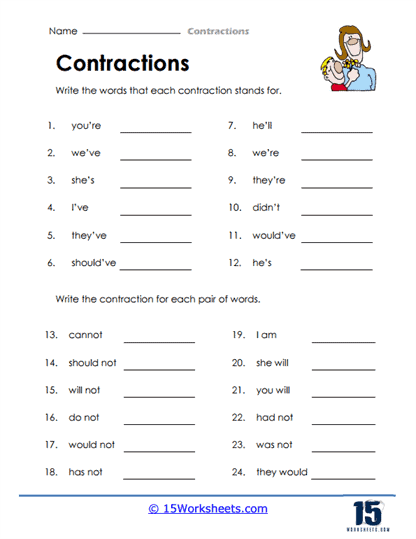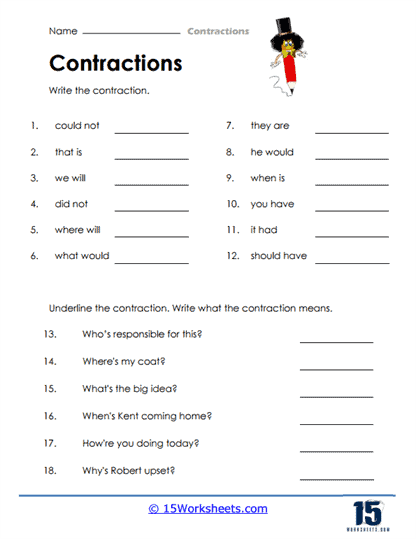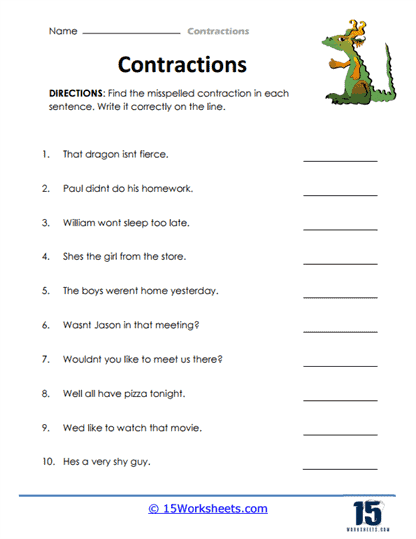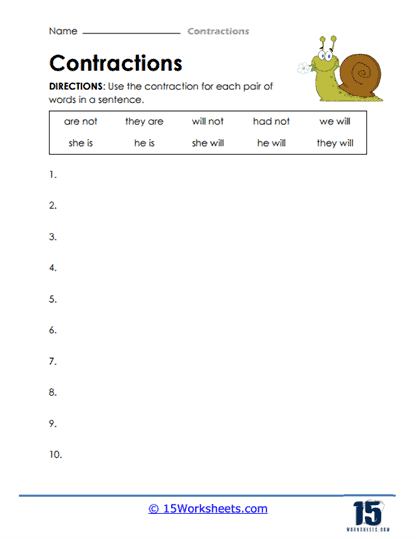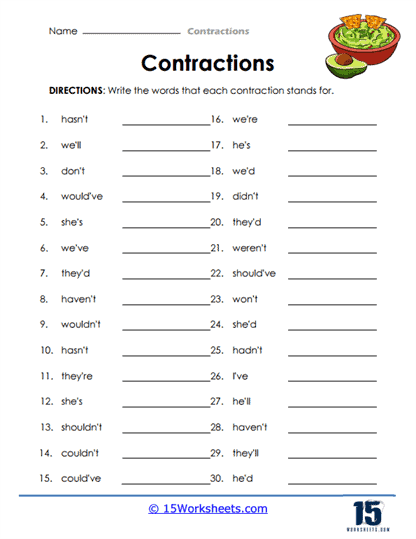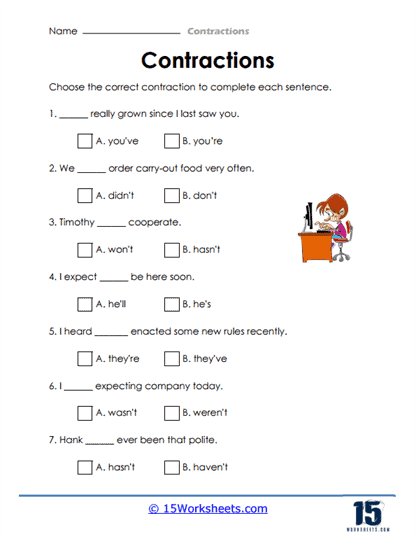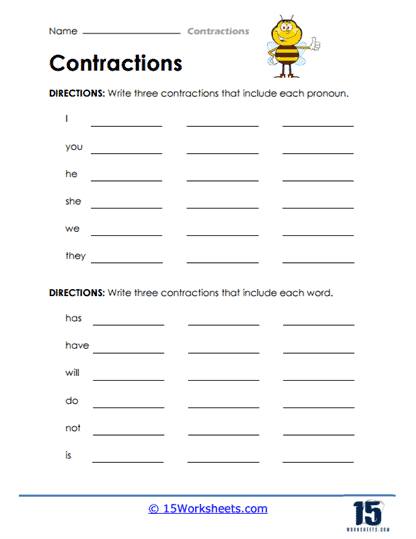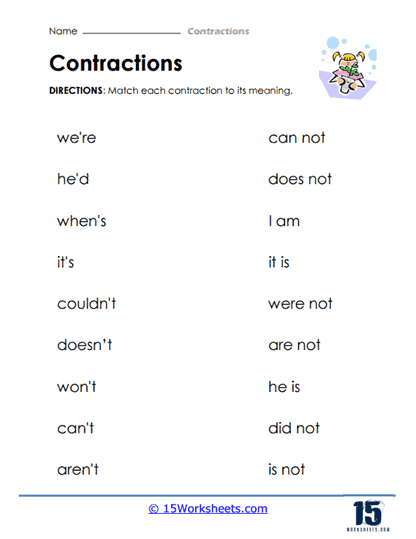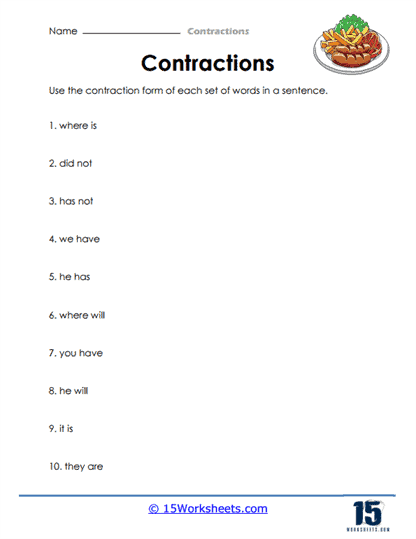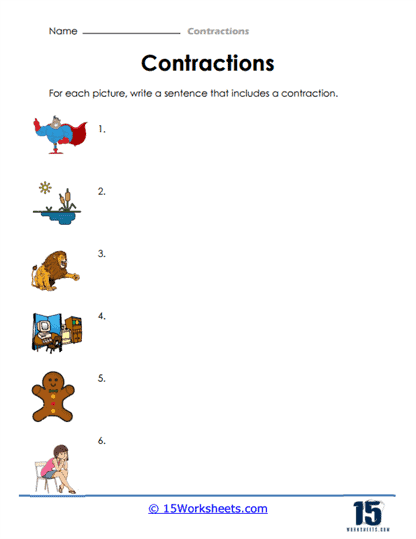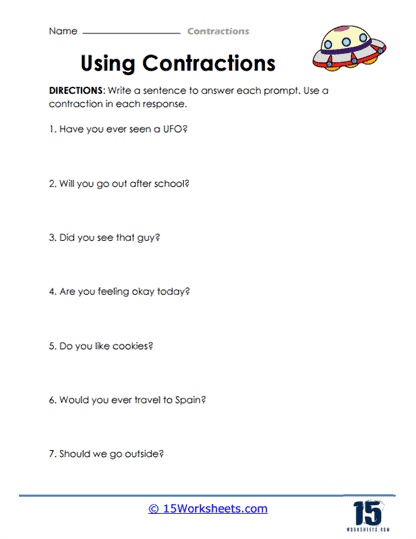Contractions Worksheets
All About These 15 Worksheets
If you’re diving into contractions with your students or kids, the page is a treasure trove. It offers a variety of worksheets designed to make learning contractions engaging and effective. These resources help learners understand how words like “do not” become “don’t” and “I am” turns into “I’m,” making English feel more natural and conversational.
The worksheets come in different styles to cater to various learning preferences. You’ll find activities where students match contractions to their expanded forms, rewrite sentences using contractions, and even create their own sentences. This variety ensures that learners not only recognize contractions but also use them confidently in context.
What’s great is that these worksheets are suitable for different age groups and learning levels. Whether you’re teaching young kids just starting with contractions or older students needing a refresher, there’s something here for everyone. Plus, they’re all free to download and print, making it easy to incorporate them into your lessons or practice sessions at home. So, if you’re looking to make contractions less intimidating and more fun, this page is a fantastic resource to explore.
A Look At The Individual Worksheets
Each worksheet offers a unique ride, transforming the seemingly mundane task of mastering contractions into an engaging adventure filled with humor and insight.
The journey begins with “Expanding and Contracting,” where students play the role of linguistic engineers, stretching and compressing phrases like “do not” into “don’t,” much like an accordion in a symphony of syntax. “From Long to Short” continues this theme, challenging students to condense verbose expressions into their snappier counterparts, turning “she will” into “she’ll” with the finesse of a seasoned wordsmith.
“Writing Shortcuts” and “Conversion Exercise” introduce the concept of linguistic efficiency, encouraging students to embrace contractions as the text message shorthand of formal writing. These exercises not only enhance writing fluency but also instill an appreciation for the elegance of brevity. “Word Transformation” adds a touch of alchemy, turning everyday phrases into their contracted forms, as if by magic.
The series takes a reflective turn with “From Mistakes to Mastery,” where students confront common errors in contraction usage, transforming missteps into learning opportunities. “Contractions in Action” brings dynamism to the practice, placing contractions within the context of lively sentences, making the learning process both practical and entertaining.
“What Does It Stand For?” and “The Right Pick” serve as the detective games of the series, prompting students to decipher the origins of contractions and select the correct forms in various contexts. These worksheets sharpen analytical skills and reinforce understanding through engaging problem-solving.
“Contraction Bonanza” and “The Meaning Match” offer a festive atmosphere, turning practice into play with matching games and quizzes that test students’ knowledge in a fun, interactive manner. “Sentence Construction” and “Picture It” cater to the creative minds, allowing students to craft their own sentences and visualize contractions through illustrations, fostering a deeper connection with the material.
“Responding With Contractions” brings the series full circle, encouraging students to apply their newfound skills in conversational contexts, bridging the gap between written exercises and real-world application. This culmination ensures that students are not only proficient in identifying and forming contractions but also confident in using them effectively in everyday communication.
What Are Contractions and Why Do They Matter?
Contractions are kind of like shortcuts in English. Instead of saying two whole words, we smoosh them together and drop a few letters, replacing them with an apostrophe. It’s something we do all the time when we talk or write casually, like saying “I’m” instead of “I am” or “don’t” instead of “do not.” It just sounds more natural and helps conversations flow more smoothly. Imagine someone walking around saying “I cannot believe it is happening” instead of “I can’t believe it’s happening” – sounds a bit stiff, right?
You’ve probably seen and heard tons of contractions already without even realizing it. Words like “can’t” (cannot), “won’t” (will not), “they’re” (they are), and “she’s” (she is or she has) pop up all over the place-in conversations, on TV, in books, and especially in texts or online chats. That little apostrophe is doing a lot of work-it shows where letters have been left out. For example, “I am” becomes “I’m” with the “a” gone and replaced by an apostrophe.
Now, even though contractions are super common, there’s a time and place for them. They’re perfect for everyday talking and casual writing like emails, notes to friends, and social media posts. But when it comes to more serious stuff-like school essays, formal letters, or job applications-it’s usually better to stick with the full forms. That said, knowing how and when to use contractions is a key part of getting comfortable with English. The more you practice spotting and using them, the more natural your speaking and writing will start to feel.

